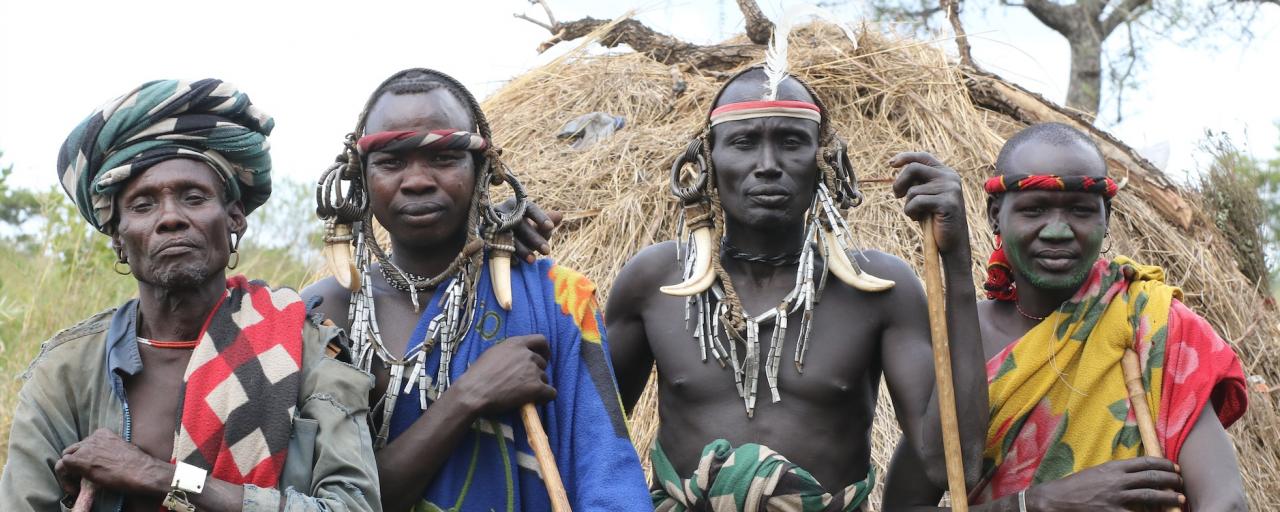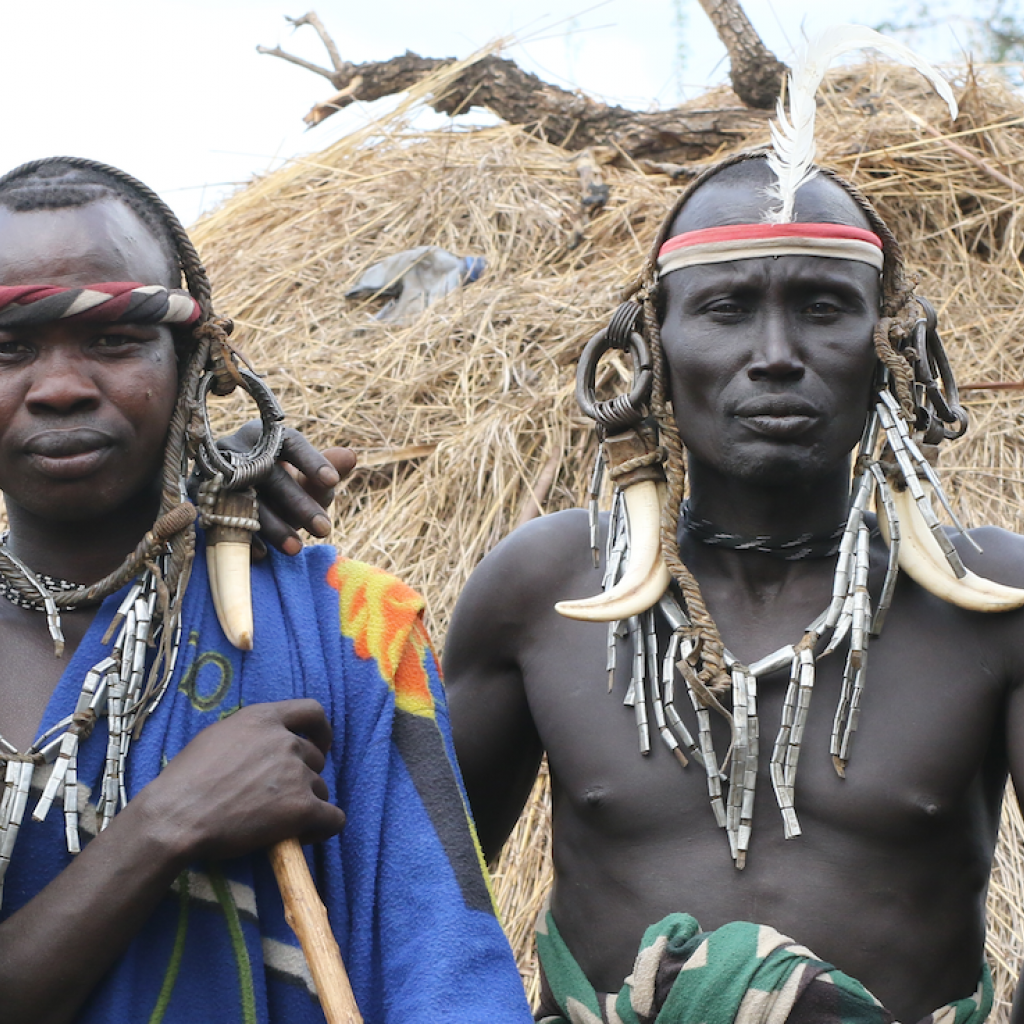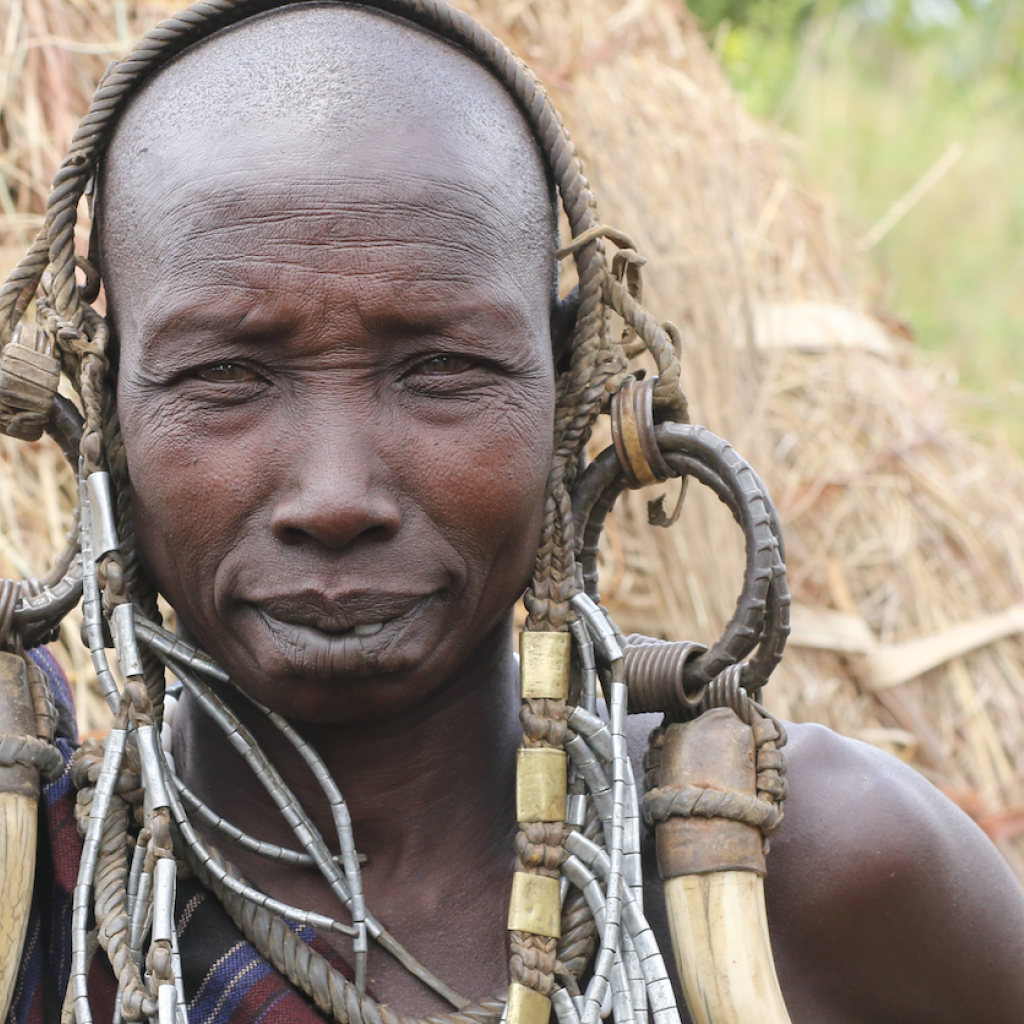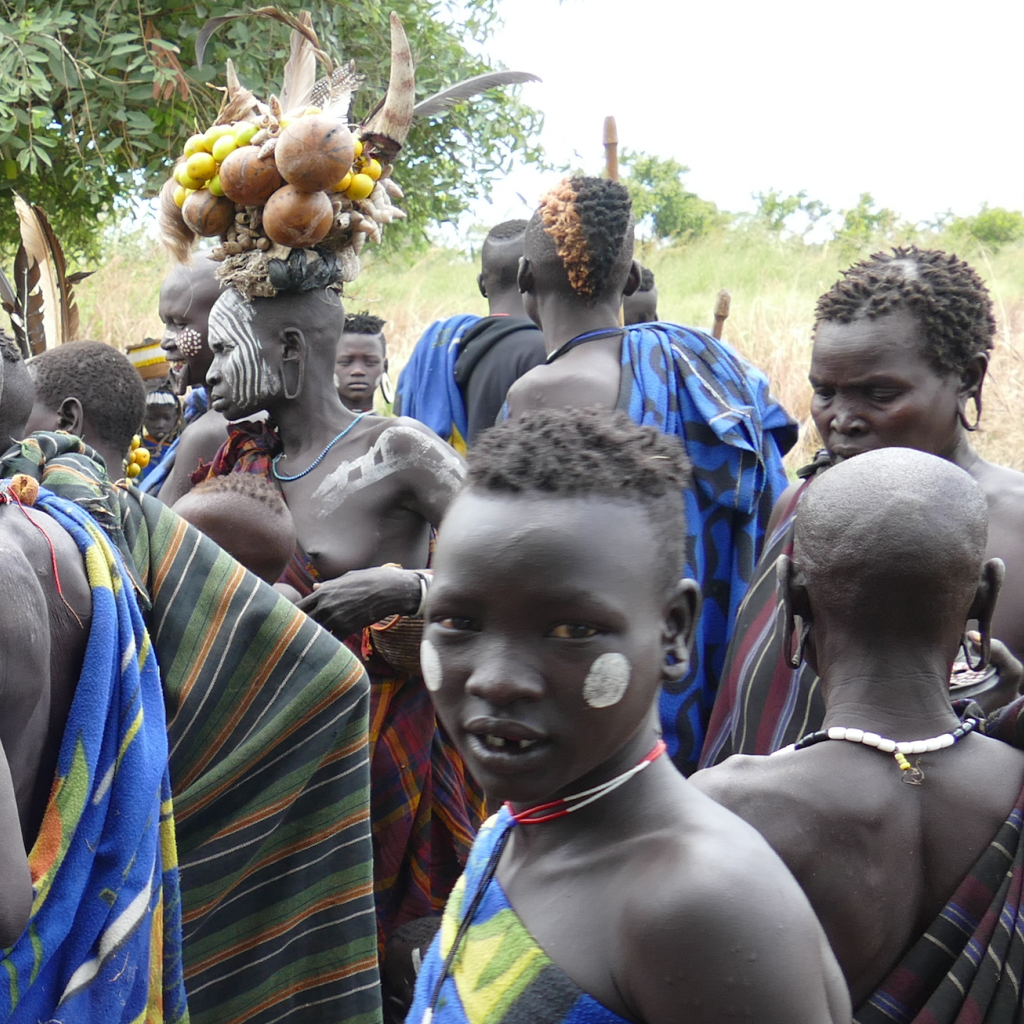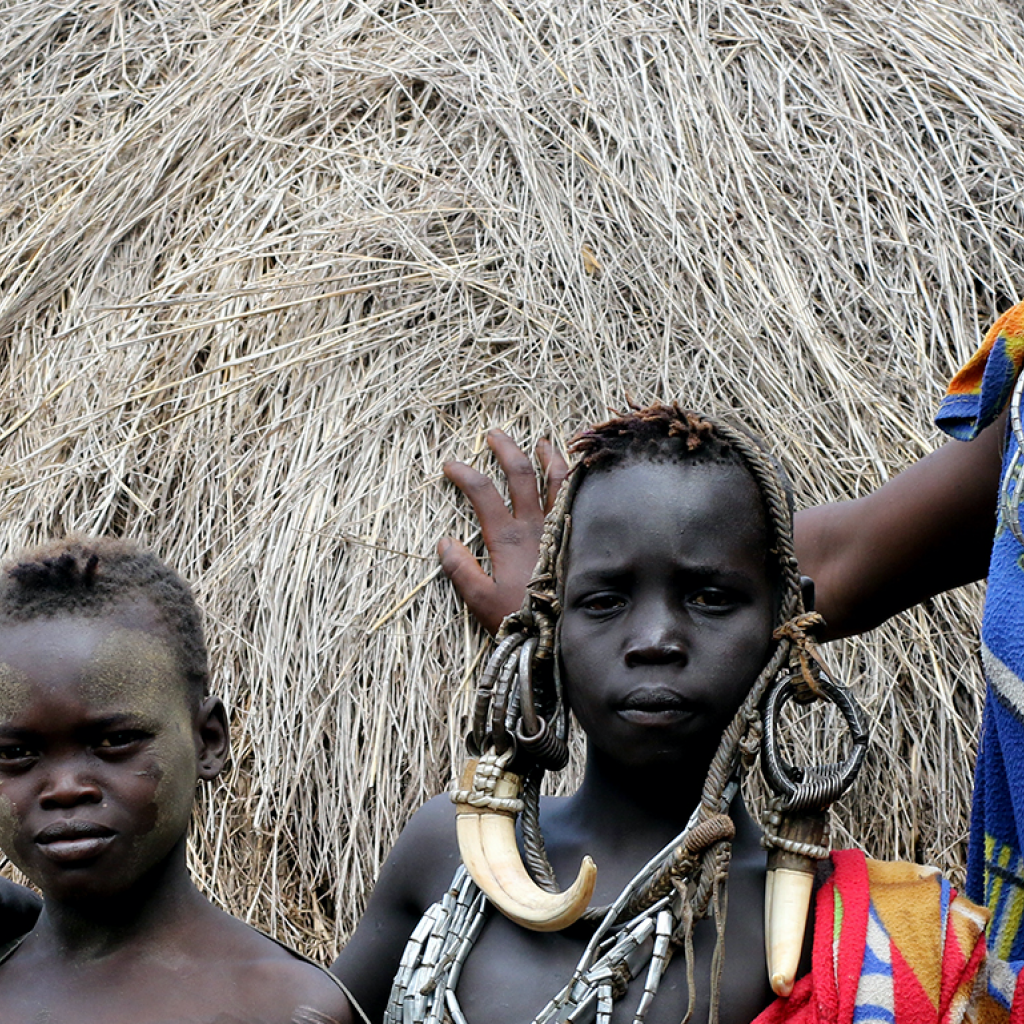The Mursi live in Ethiopia at the Omo Valley and are one of the few tribes who still live according to a traditional lifestyle.
The social organization of the Mursi is based, like other simple societies who do not have a complex organization, on family ties and descent; kinship becomes the foundation of the social structure and rules.
The elements that characterize the social organization of the Mursi are:
• The division into clans
• The subdivision into age groups
• The division into local groups
• Important figures in society
The social organization of the Mursi: the division into clans
The Mursi are divided into clans, or kabi; each clan is made up of a group of people who believe they are all descended from the same ancestor, of whom however there is no longer any memory.
Men who belong to the same clan have a very strong bond of interdependence, as if they were members of a large family; precisely as a consequence of a strong bond, the members of the same clan usually live in the same territory, but no one prevents the members of a clan from living elsewhere, as long as they reside in the territory of the Mursi.
The Mursi clans are 18 in all, some of these are small, others are much more numerous and are then divided into sub-clans.
It is forbidden to marry between members of the same clan precisely because it is thought that they are all related to one another, and marriage between members of certain clans is also prohibited, since there were links between them in their past.
Obviously not having great historical evidence on the history of the Mursi and their clans, to define a series of information and rules the Mursi refer to the stories that narrate the events of the past; in the case of the origins of some clans, a series of hypothesis have recently been formulated, some could go back to other tribes who lived in the territories in which the Mursi passed or settled during their migrations.
The social organization of the Mursi: the subdivision into age groups
Another important aspect of the social organization of the Mursi is the age group system.
The Mursi have two main age categories: young people and adults who, in turn, are divided into age groups; this division concerns only men, while women, once married, acquire the age group of the husband.
The age groups of the Mursi are seven, four for young people and three for adults, and have a correspondence with the birth age groups.
There are four age groups for young people: the first three classes, Rumunyoi, Changala and Donga, are a subdivision purely related to age and their members have no particular duties other than to look after the herd of their father's cattle; the fourth age group of young people, Teru, has also a social role but it is still marginal.
The Teru, to pass to the first age class of adults, the Rora, must face a rite of passage: the Donga ritual, a violent fight in which they face each other holding a long stick, that is called Donga.
Once the Donga ritual has been passed, a public holiday, the nitha, is celebrated to honour the acquisition of adulthood.
There are three Mursi age groups for adults: the Rora, the Bara and the Karo; to each of these classes correspond a series of duties, tasks and responsibilities.
The transition from one age group to another of the adults occurs as a consequence of the passage of new Teru to the Rora class; then in cascade the current Roru become Bara, just as the Bara become Karu.
Each adult age group has different tasks and roles: the Rora have a role similar to that of the police or the army; the Bara have an active role in the community and participate in public debates and make decisions on the issues of the community, moreover, together with the Rora they work to ensure the safety of people and to protect livestock; the Karu have a supervisory role in public affairs and can give advice and suggestions based on their experience.
The social organization of the Mursi: the subdivision into local groups
The Mursi, in Ethiopia, are divided into five local groups, bhuran, that correspond to the areas in which these groups live and cultivate; these areas are located along the Omo River and are those affected by seasonal floods that make the soil fertile.
The territorial boundaries among the various local groups are not drawn and therefore it is not always clear where a territory begins and where another ends, moreover the various local groups periodically move according to the best territories to cultivate.
The subdivision into local groups is interconnected with the history of the Mursi and their migrations that, in turn, were determined by the search for pastures for cattle.
Following the migrations, the five local groups have come to form and they are not the result of a social structure but identify certain areas of the territory of the Mursi, even if they also have social implications.
There are no restrictions corresponding to the territories of the local groups; everyone can move and go to live in the territory they prefer, even if usually the members of the same clan prefer to live in the same territory, mostly due to the strong relationship among the members of the clan.
Local groups are relevant when some very important rituals are celebrated in Mursi society, such as the Donga ritual or the feast for the transition to adulthood of the Teru boys; in these cases a chronological order is followed for the celebrations that reflects the migration path of the Mursi tribe and therefore the position of the various local groups in the territory.
Marriages between members of local groups are permitted unless the two spouses are part of the same clan or clan that is forbidden to marry.
The social organization of the Mursi: the important figures of the society
In the Mursi society there are various figures who are of great importance; each of these figures has a specific social role.
The most important and influential figure in the Mursi society is the priest or Komoru.
The Komoru celebrates rituals for the community, for example to protect livestock, to propitiate rains, for people's health and more.
There is only one way to become a Komoru, you have to inherit this role and some Mursi clans are known to be priests clans; each local group, or bhuran, has its own Komoru who, given his importance for the community, should never leave the territory of the Mursi.
The Komoru is a role that is formally recognized and that involves the celebration of a ritual to succeed one's predecessor.
Another important figure in Mursi society is the speaker or Jalaba.
The Jalaba is a more political role and is recognized by those who are skilled orators in public debates, he is not elected nor does he refer to a man's clan; it is not an official position, it is more a recognition of leadership by the community.
To be a Jalaba it is necessary to have passed the rite of passage from adolescence to adulthood, as children cannot actively participate in public debates; Jalaba usually belong to the Bara age group.
There are two other important figures in the Mursi society and they are the healers; there are two types of healers: the Nani and the Ngerre.
The Nani is more similar to a doctor, as they are those who are able to heal people from physical problems: some are able to heal wounds, others instead perform even more demanding operations; moreover, the Nani are those who know how to shape the horns of cattle, a very important operation for the Mursi.
The Ngerre, on the other hand, is more like a witch who acts as a link between divinity and people and takes care of the individual who turns to her; the Ngerre interprets the signs of divinity and uses clay and cattle dung to heal or protect those who turn to her for help.
Each Ngerre specializes in certain types of diseases and curses.
The fundamental difference between the Komoru and the Ngerre is that the Komoru acts at the level of the community and is concerned with celebrating rituals for the collective good, while the Ngerre acts at the level of the individual and tries to solve the problems that directly afflict him, be they diseases or curses.


